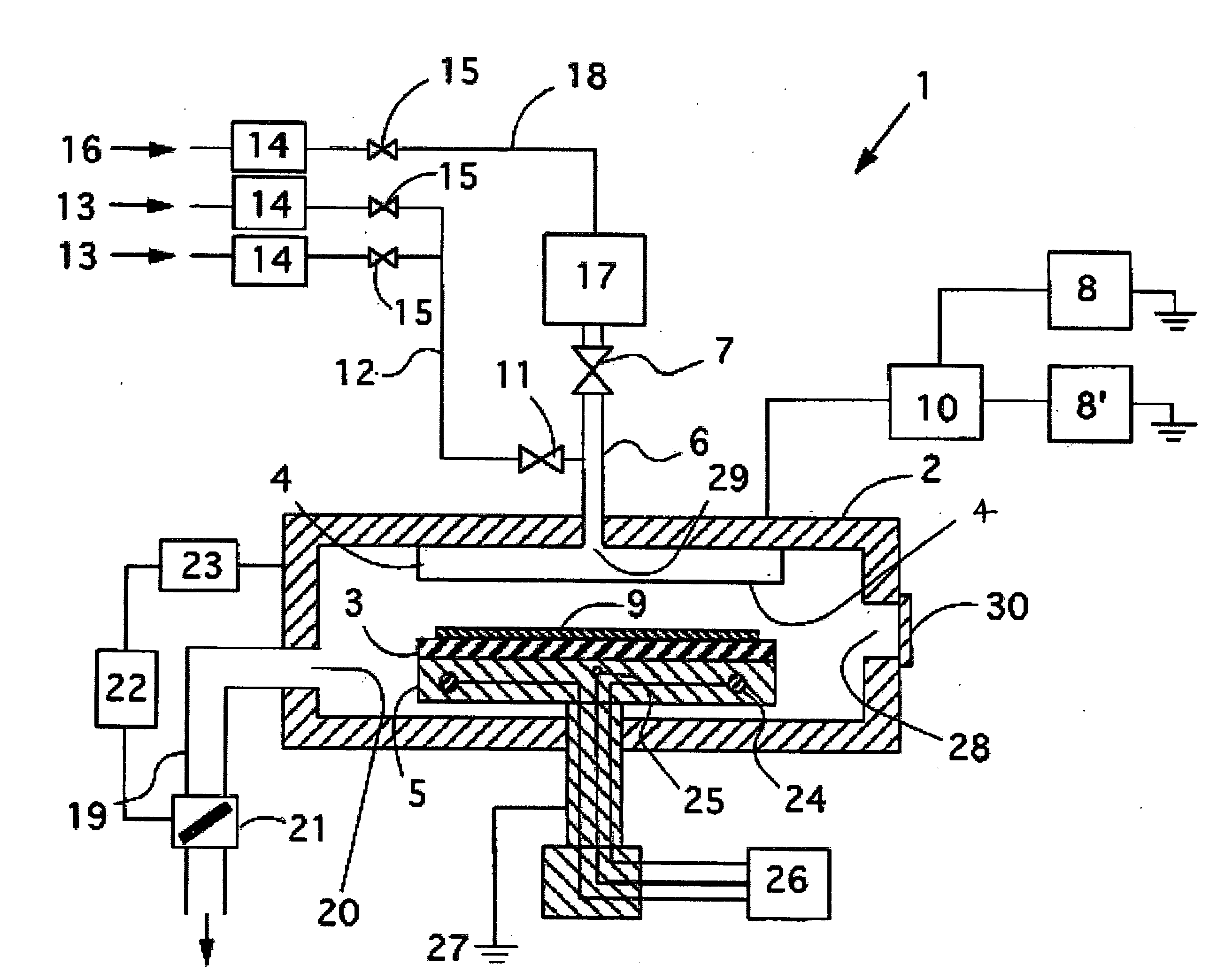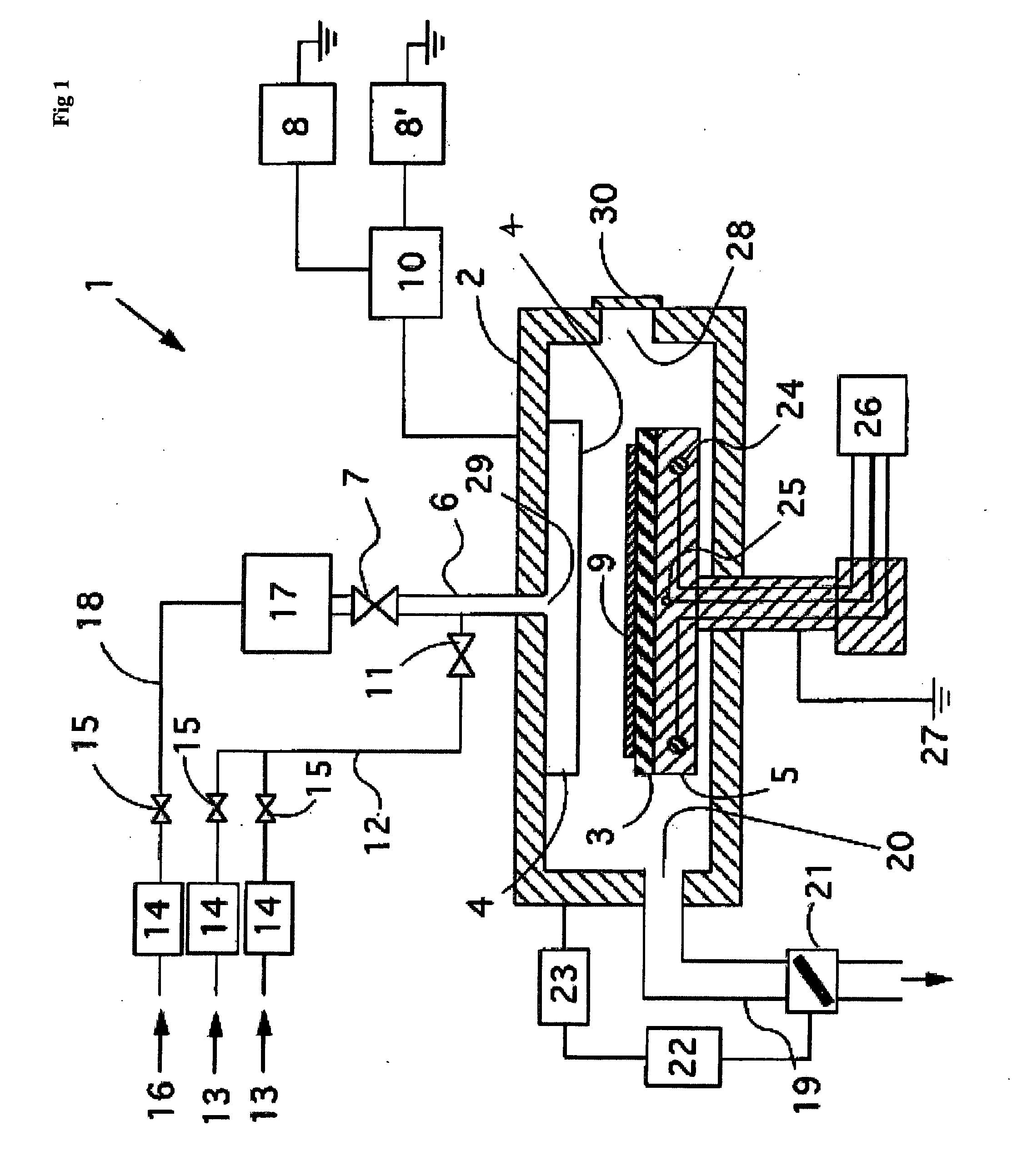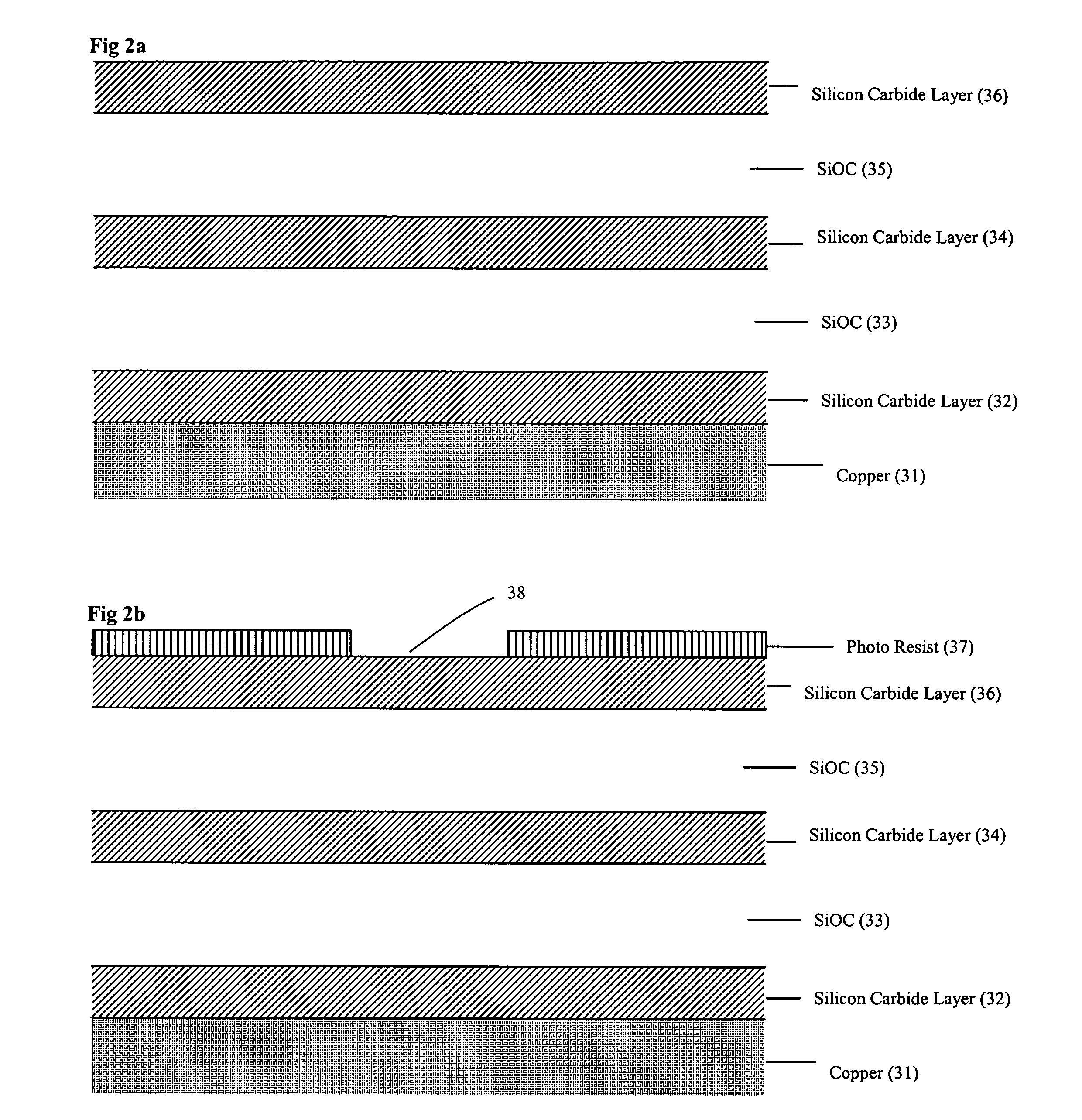Method of forming silicon carbide films
- Summary
- Abstract
- Description
- Claims
- Application Information
AI Technical Summary
Benefits of technology
Problems solved by technology
Method used
Image
Examples
Embodiment Construction
[0027] Disclosed herein is a method for depositing a silicon carbide film having a low dielectric constant with low leakage current and high compressive stress onto a substrate in a CVD chamber, comprising the steps of providing a silicon source, carbon source, nitrogen source and an inert gas in a reaction zone containing a substrate, and reacting the silicon and carbon and nitrogen source in the presence of a plasma to deposit a low dielectric constant and low leakage current silicon carbide film on the substrate.
[0028] A mixture of high and low frequency RF power generates the electric field, wherein the ratio of low frequency to total power is less than about 0.5. The leakage current and dielectric constant in the resulting silicon carbide film is directly related to the carbon concentration, amount of nitrogen and inert gas introduced.
Silicon Carbide Layer Formation
[0029] In one preferred embodiment of the present invention, a silicon carbide layer is formed by reacting a ga...
PUM
 Login to View More
Login to View More Abstract
Description
Claims
Application Information
 Login to View More
Login to View More - R&D
- Intellectual Property
- Life Sciences
- Materials
- Tech Scout
- Unparalleled Data Quality
- Higher Quality Content
- 60% Fewer Hallucinations
Browse by: Latest US Patents, China's latest patents, Technical Efficacy Thesaurus, Application Domain, Technology Topic, Popular Technical Reports.
© 2025 PatSnap. All rights reserved.Legal|Privacy policy|Modern Slavery Act Transparency Statement|Sitemap|About US| Contact US: help@patsnap.com



